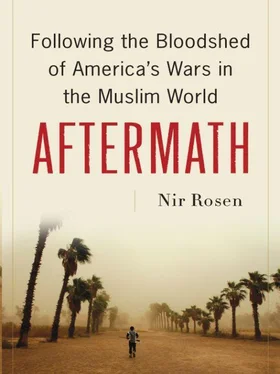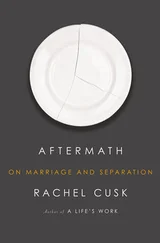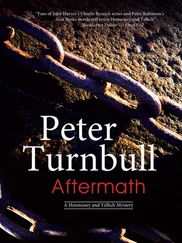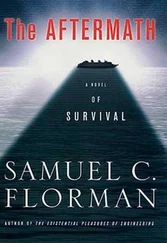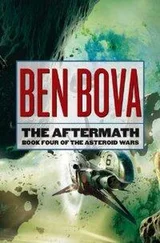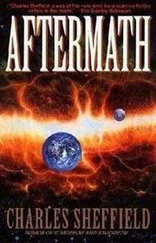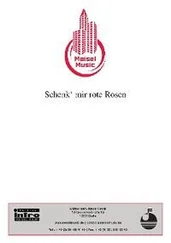He switched slides to a satellite image showing the Mustafa Husseiniya but calling it “Tgt Complex.” Several blocks away was a building the slide described as the Ibrahim Al Khalil Mosque, and even farther away was a building incorrectly identified as the Al Mustafa Mosque. “Last Sunday,” he began, “Iraqi special operations forces had indications that a kidnapping cell was working out of this target complex.” He pointed to the satellite image. “This was led, planned, and executed by Iraqi special operations forces, based on detailed intelligence that a kidnapping cell was occupying this complex.” He pointed at the husseiniya again. “The operation consisted of about fifty members of Iraqi special operations forces and about twenty-five U.S. advisers. The U.S. advisers there purely in an advisory role. They did none of the fighting. There wasn’t a shot fired by U.S. service members during conduct of this operation. They surveyed the battlefield in advance, looking for sensitive areas, and they said, Okay, there are mosques in the area, but the nearest mosque is about six blocks from the target complex, so the decision was made to do the operation, focused on this kidnapping cell, and try to rescue a hostage, an Iraqi hostage. Operation planned, led, and executed by Iraqi special operations forces. They got in the area with their vehicles. They immediately started taking fire, from this complex,” he said, pointing again to the map. “Now remember, many buildings in that compound and many rooms in the building. They took fire right away, they returned fire.” Once inside, “they had additional gunfire exchange.”
I remembered my visit. There were no signs of any gun battle or any fire coming from inside the husseiniya —no random bullet holes, no Kalashnikov shells (although they could have been picked up). The entire affair had seemed very one-sided.
“All told,” Lynch continued, “sixteen insurgents were killed, eighteen were detained. We found over thirty-two weapons, and we found the hostage, the innocent Iraqi, who just twelve hours before was walking the streets of Baghdad. He was walking the streets of Baghdad en route to a hospital to visit his brother, who had gunshot wounds. He was kidnapped and beaten in the car en route to this complex.” He pointed to the Mustafa Husseiniya again. “When he got there, they emptied his pockets. They took out his wallet, and in the wallet was a picture of his daughter. He asked for one thing. He said, ‘Please, before you kill me, allow me to kiss the picture of my daughter. That’s all I ask.’ The kidnappers told him, ‘Hey, we gotcha, and if we don’t get twenty thousand dollars sometime soon, you’re dead.’ And they showed him the bare electrical wires that they were gonna use to torture him, and then kill him, and they said, ‘We’re gonna go away and do some drugs, and when we come back, we’re gonna kill you.’ He was beaten. He was tortured. He was tortured with an electrical drill. Twelve hours after he was kidnapped, he was rescued by this Iraqi special operations forces rescue unit. He is indeed most grateful. He is most grateful to be alive, and he is most grateful to the Iraqi special operations forces. The closest mosque was six blocks away. When they got close to the compound, they took fire, and they returned fire. When they got inside the rooms, a room in this compound, they realized this could have been a ‘husenaya,’ a prayer room. They saw a prayer rug. They saw a minaret. They didn’t know about that in advance, but from that room, and from that compound, they were taking fire. In that room, and in that compound, the enemy was holding a hostage, and torturing a hostage. And in that room, and in that compound, they were storing weapons, munitions, and IED explosive devices. Very, very effective operation, planned and executed by Iraqi special operations forces.”
When asked who the enemy the previous Sunday might have been, Lynch responded that “we had no indication, no specific indication, what group these people came from. This was clearly a kidnapping cell that we’d watched for a period of time. There were indications that it was an active cell, and that’s why the operation was planned by the members of the Iraqi special operations forces. Now, I can’t tell you which particular unit or if they were from the Mahdi militia. I don’t know. . . . Extremists, terrorists, criminals—it’s all intertwined. We have reason to believe, and evidence to support, that the terrorists and foreign fighters are indeed using kidnapping as a way to finance their operations. And the story that I told about Sunday night’s kidnapping could be told many more times.”
The news of the American raid was—for once—greeted with delight by Sunnis, who were used to seeing Shiites celebrating when the Americans hit Sunni targets. But what really happened at the husseiniya ? There was indeed a Sunni prisoner in the Mustafa Husseiniya, the last suspect in the killing of Haitham al-Ansari (see previous chapter). Half the Mustafa Husseiniya was controlled by the Sadrist hawza , with Sheikh Safaa as the spiritual leader. The other half was controlled by a man named Abu Sara, who led a Mahdi Army death squad known as a “special group.” Abu Sara was an ex-Baathist and ex-member of Saddam’s fedayeen militia. Safaa hated him, my friend Firas told me, because he was against armed men coming to the mosque. When the Americans struck just before the evening prayer, Abu Sara and his men had not yet arrived; they were still on their way to pray. The Americans killed ten people inside and seven outside, but they were innocent. They released the suspected Sunni killer, and he fled to Syria.
The Americans called the raid Operation Valhalla. It was conducted by the U.S. Army’s 10th Special Forces Group (Airborne), commanded by Lieut. Col. Sean Swindell and an Iraqi Special Forces unit they were training. The target was one individual who left shortly before the soldiers arrived, though I was never able to confirm what he was suspected of doing. “We came under fire and at that time had to protect ourselves,” an American participant told me. “Iraqi Special Operations forces and U.S. adviser forces, as we got to the area, came under intense fire from all directions, including within the husseiniya . We assaulted and searched the targeted area. We stumbled upon the Sunni prisoner by accident during the course of the operation. There was one hostage rescued. He stayed with us for a number of months doing small work because he was extremely scared for his life.”
One Iraqi Special Operations soldier was wounded. After the raid a senior sheikh from Ur came to complain about the raid to the Americans, along with three or four young “henchmen” of his. “He was one very bad guy,” said the American who took part in the raid. “One henchman asked why we were shooting at certain buildings. We showed him we were taking heavy fire from the husseiniya . He said they were not shooting at us but at the helicopters.” I asked the American soldier which group they were targeting. “We did not make the distinction. Bad guys were bad guys. The sheikh and his henchmen received the same briefing that was given to the prime minister and agreed with everything we presented. They were impressed with what we knew and acted on.”
The Americans insisted that immediately after the battle the dead bodies were removed from the husseiniya along with their weapons so that it would appear to be a one-sided attack on men in a mosque. The Americans say they conducted an investigation and that the unit effectively halted operations for a month. Some of the men in the unit had cameras on their helmets, which apparently corroborated their versions in the investigation and contrasted with the version presented by reporters on the scene.
Читать дальше
